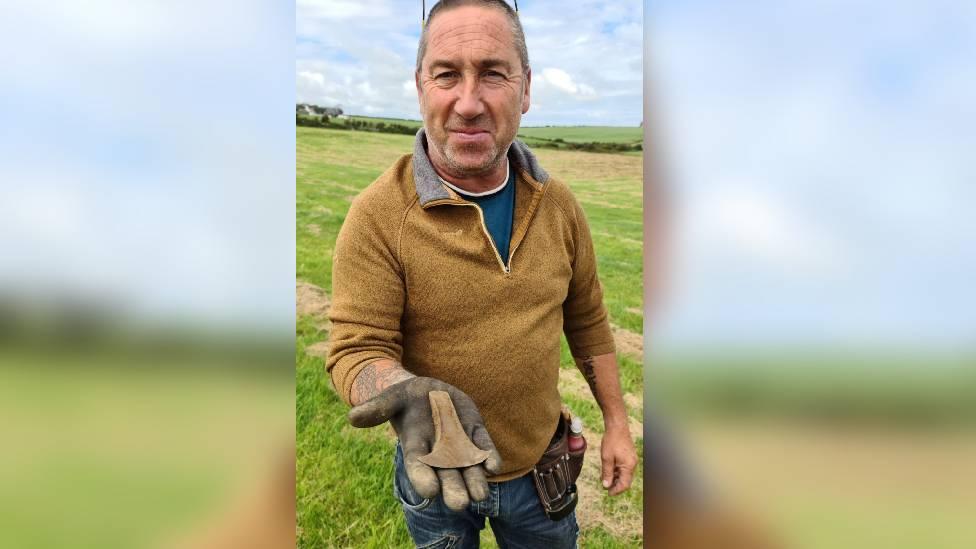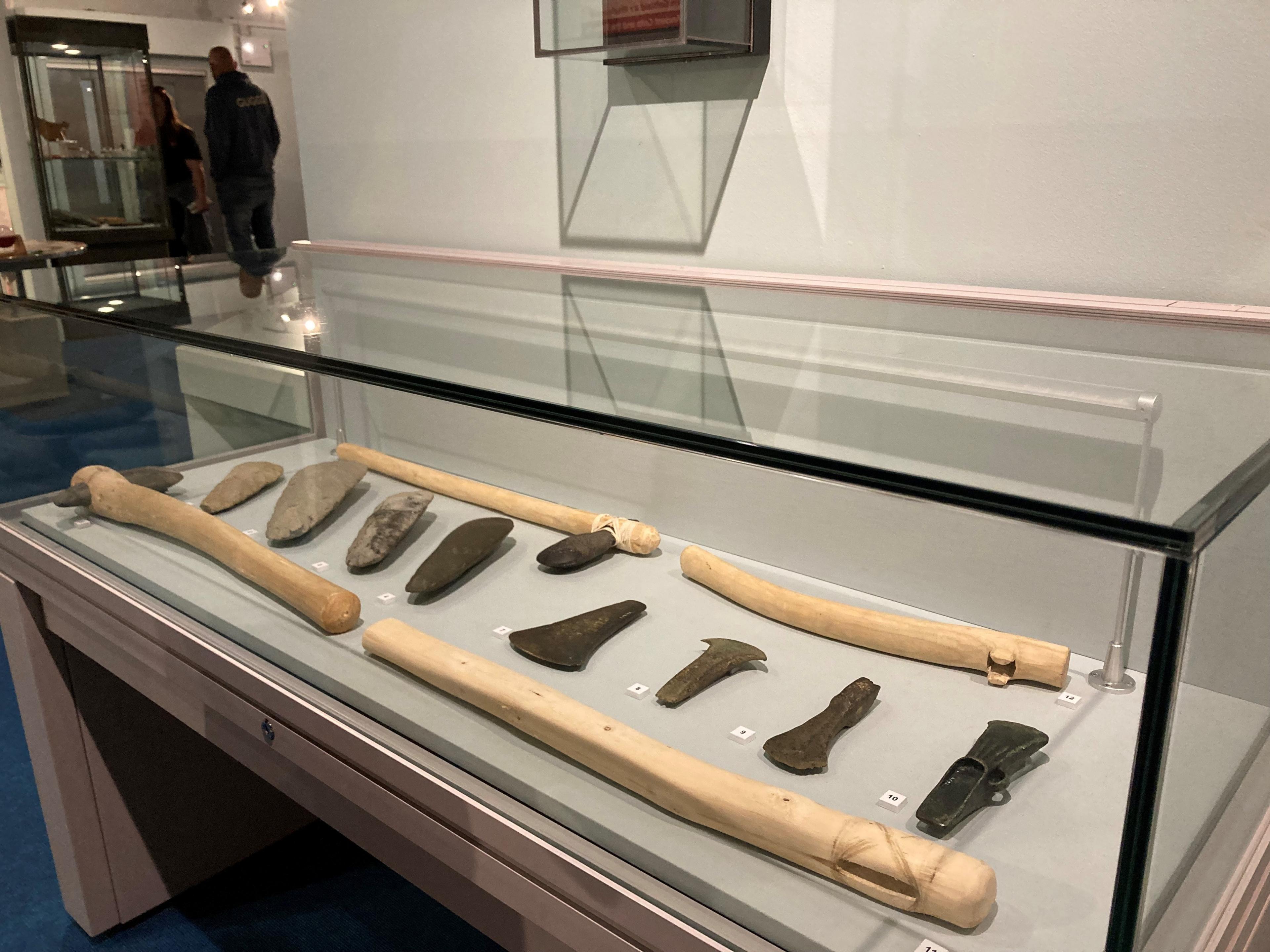Rare 3,500-year-old Bronze-age axe head found

The axe head was found by metal detectorist Paul Rowlands
- Published
A rare Bronze-age axe head, thought to be more than 3,500 years old, has gone on display after being found by a metal detectorist.
Paul Rowlands, 53, made the discovery in an field near Llanfaethlu, Anglesey, in 2020.
The copper-alloy cast tool was still razor sharp after thousands of years.
The find has been described as “a rare discovery, with only a few of its type found in north Wales”.
Mr Rowlands had been out metal detecting with a friend Mathew Thomas just before the first Covid lockdown in 2020, and was just about to give up when he made the discovery, according to the Local Democracy Reporting Service.
“We had been in the field for about two hours, and we hadn’t found much, just the odd button.
“I was just going to give up, go for a cup of tea, and the signal rang out a 26 on my machine, which is not usually anything good, but I thought ‘well, I’ll dig it’, I’d gone about eight inches and then spotted it.
“It was fantastic to find it in such good condition and still so sharp,” he said.
He added he immediately knew what it was.

Paul Rowlands found the axe head shortly before the first Covid lockdown
A finds liaising officer confirmed it was a flanged axe dating to the Arreton metalworking tradition at the end of the Early Bronze Age, from about 1800 to 1500 BC.
The axe head measures12cm (4in) in length, and has shallow hammered flanges along its sides – a feature which helped it fit into a wooden handle. Binding would then be used to secure it into place.
“I knew it was special, and they said it was rare, but because of lockdown it just sat in a box."
The axe head is now on display at Oriel Môn in Llangefni.
Collection and buildings manager Ian Jones said the museum was “delighted” at the acquisition.
“The prehistoric bronze axe head is in remarkable condition with a still sharp working edge,” he added.
Mr Jones said the advent of the Bronze Age, saw “a speeding up” of technological development and the manufacture of tools and weapons increased.
Specialised equipment emerged for domestic use, woodworking and metalworking.
“Axes were used mainly for the clearance of land, for farming and for shaping wood, although they could also be used for use in ceremonial practices and battle,” he added.

The axe head is on display at Oriel Môn in Llangefni, Anglesey
Mr Rowlands' previous oldest finds include hammered coins, including a Henry VIII from 1523, and a 17th Century William III shilling.
“I doubt I shall ever beat it, or find anything older than the axe head.”